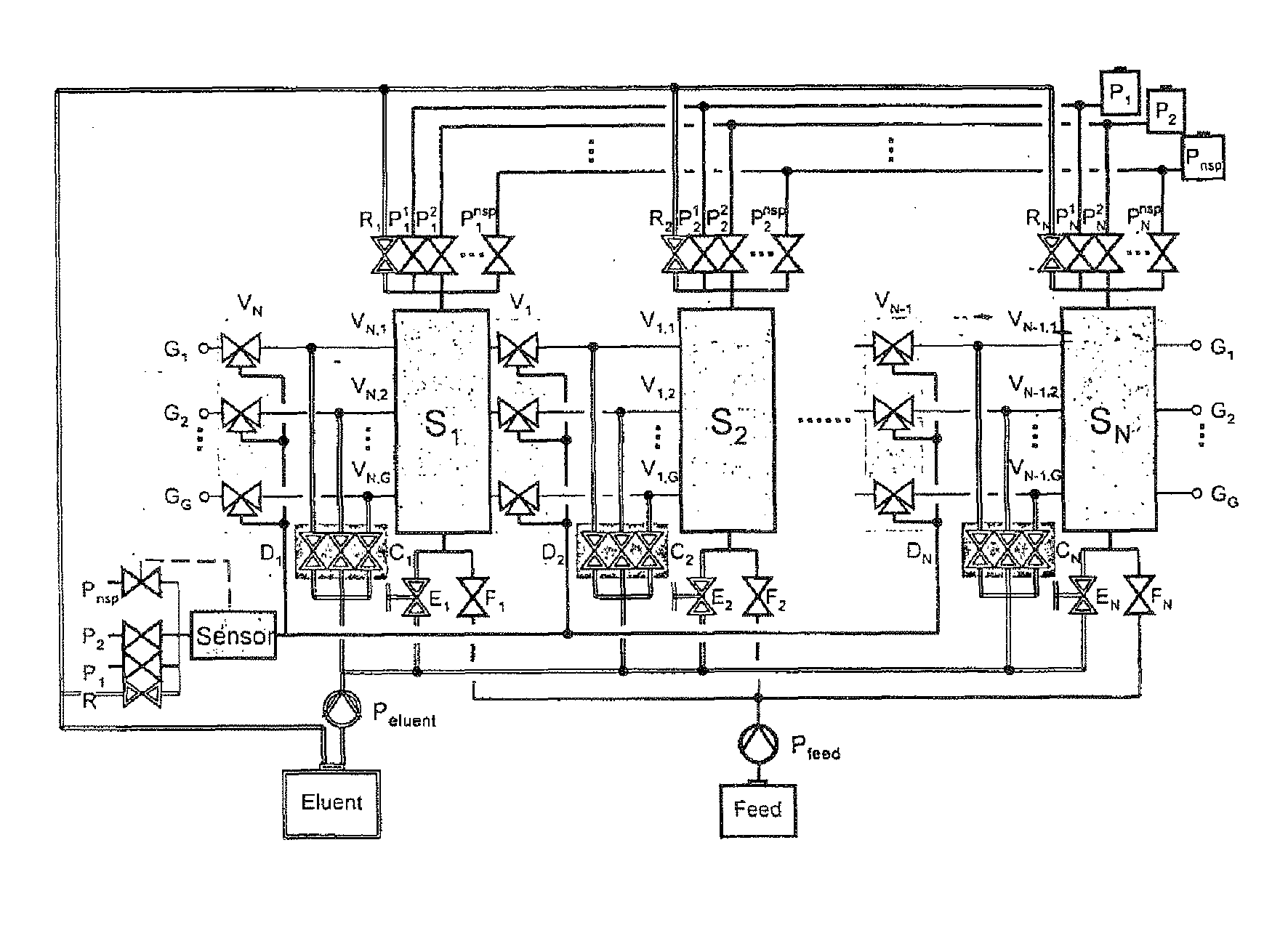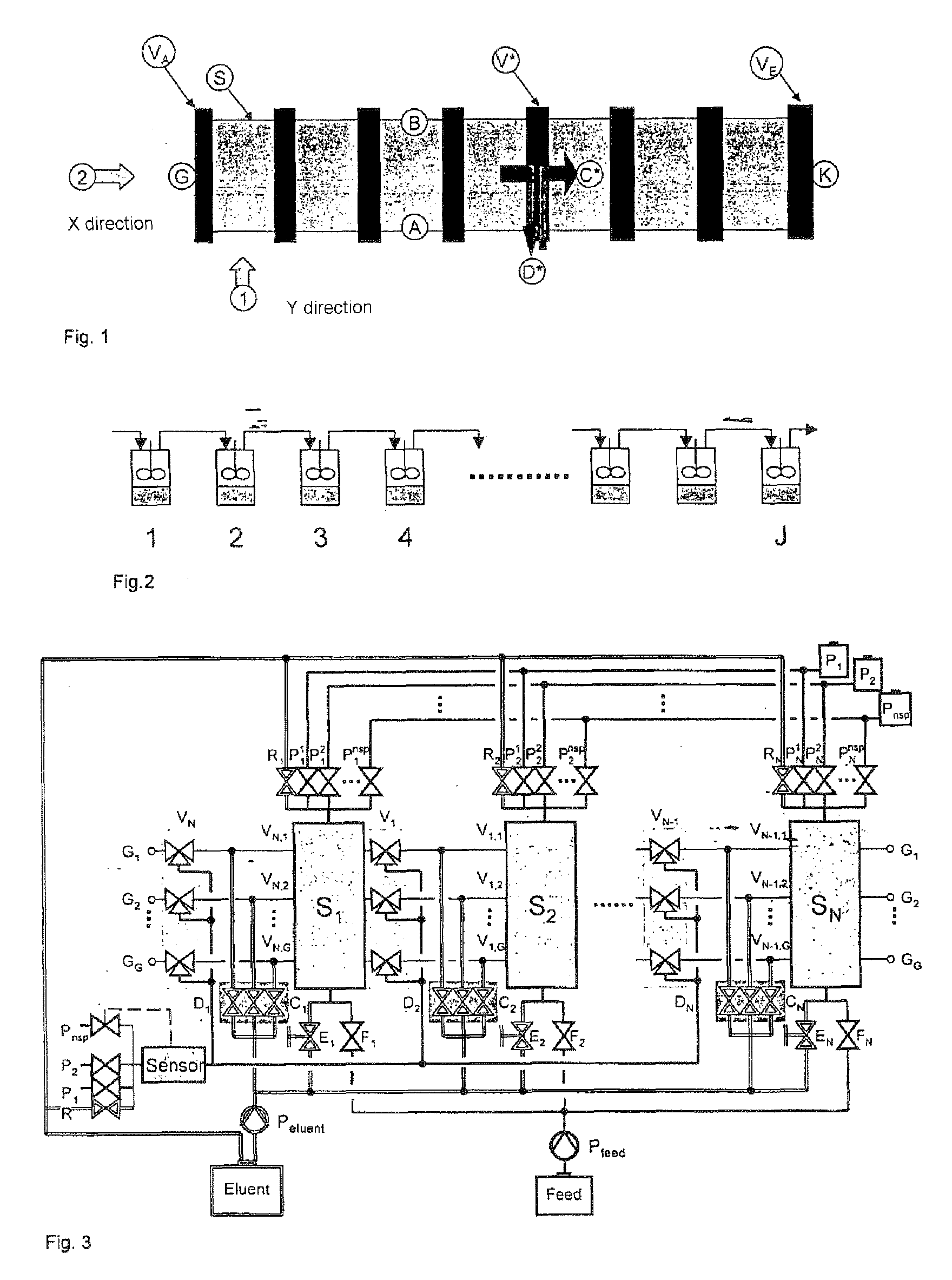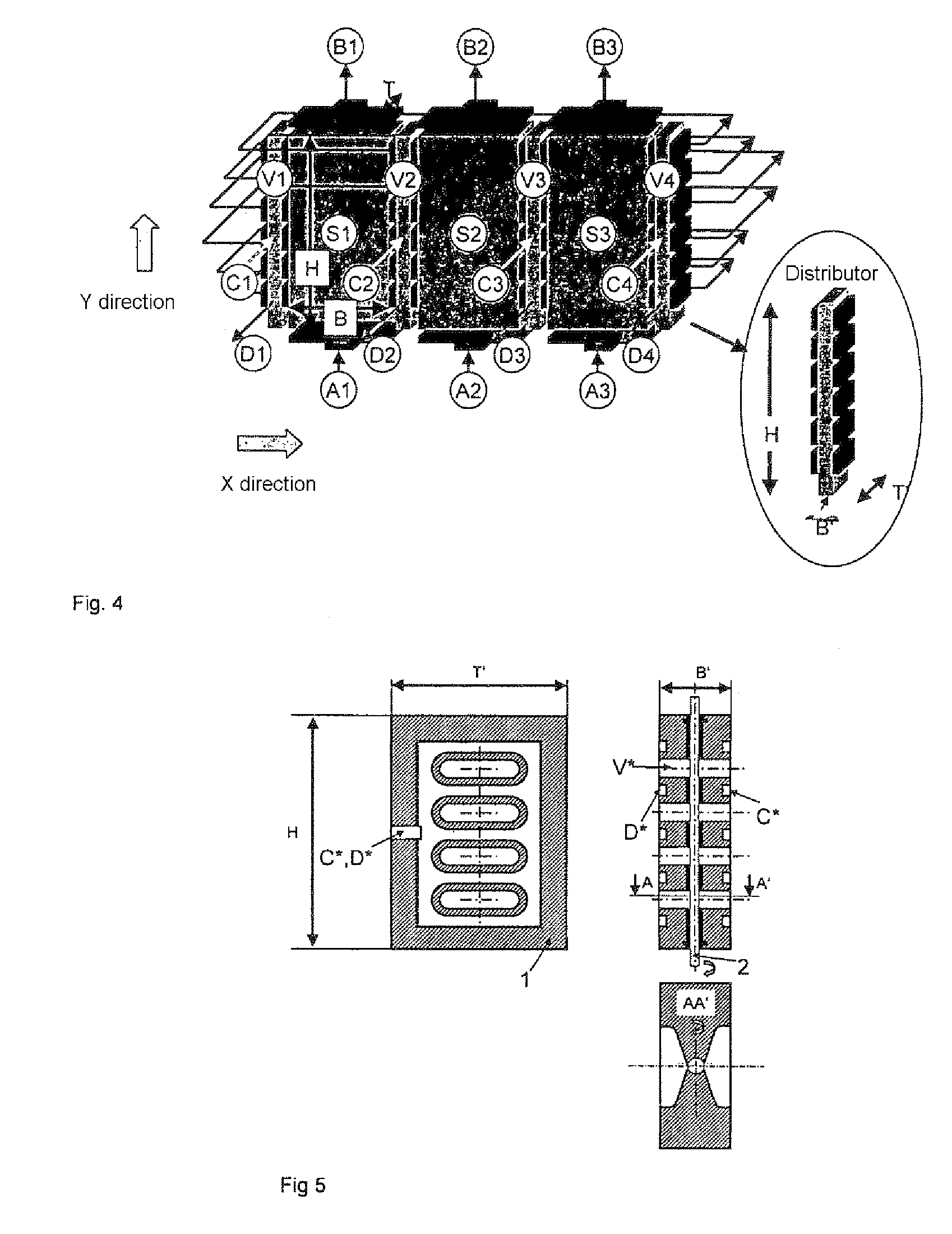Semi-continuous chromatographic method and corresponding device for the separation of binary and multi-component mixtures
a chromatographic method and multi-component technology, applied in the direction of separation processes, instruments, ion-exchangers, etc., can solve the problems of large solubility limit, large economic advantage over the conventional smb method, and large time-consuming batchwise process to purify a given amount of product, etc., to achieve the effect of reducing solvent consumption and increasing productivity
- Summary
- Abstract
- Description
- Claims
- Application Information
AI Technical Summary
Benefits of technology
Problems solved by technology
Method used
Image
Examples
example 1
Simulation of the Separation of a Binary Substance Mixture
[0071]FIG. 6 illustrates the way in which this process functions using the example of a two-substance mixture (A+B). Three chromatographic columns are used for this purpose. A linear adsorption with ideal behavior is assumed, i.e. without taking account of dispersion, diffusion or other front-smearing effects. Moreover, for the sake of simplicity, it is assumed that the readily adsorbable component (A) is twice as fast as the less adsorbable component (B). In addition, the volume flows in radial Y direction are adjusted equally over all columns (Qy) and are half of the volume flow in axial X direction (Qx). Qx in turn is selected such that the less adsorbable component (B), at the end of the second step, has migrated half a column length further overall. The example thus constructed shall, at this point, serve only for understanding of the individual steps and of the overall process.
[0072]In FIG. 6, it is possible to follow h...
example 2
Separation of a Tertiary Substance Mixture
[0074]In the operation of this novel process, a distinction is drawn, as illustrated in FIG. 7 using the example of a ternary substance separation with a total of seven columns, between two steps which are performed in succession and form one period of the system. In the first step (=feed phase), feed is supplied in radial Y direction at one point (A4) in the circuit, and otherwise pure solvent is supplied to the remaining columns (A1-A3, A5-A7). In this step, the distributors (V1-V7) separate the chromatographic columns (S1-S7) from one another, as a result of which the volume flow of each individual chromatographic column can be adjusted independently. The individual volume flows are established here such that the particular target component is obtained in the desired purity at the particular outlet (B1-B7) of the particular chromatographic column. The correct values for the volume flows are determined on the basis of a model-based design ...
PUM
 Login to View More
Login to View More Abstract
Description
Claims
Application Information
 Login to View More
Login to View More - R&D
- Intellectual Property
- Life Sciences
- Materials
- Tech Scout
- Unparalleled Data Quality
- Higher Quality Content
- 60% Fewer Hallucinations
Browse by: Latest US Patents, China's latest patents, Technical Efficacy Thesaurus, Application Domain, Technology Topic, Popular Technical Reports.
© 2025 PatSnap. All rights reserved.Legal|Privacy policy|Modern Slavery Act Transparency Statement|Sitemap|About US| Contact US: help@patsnap.com



